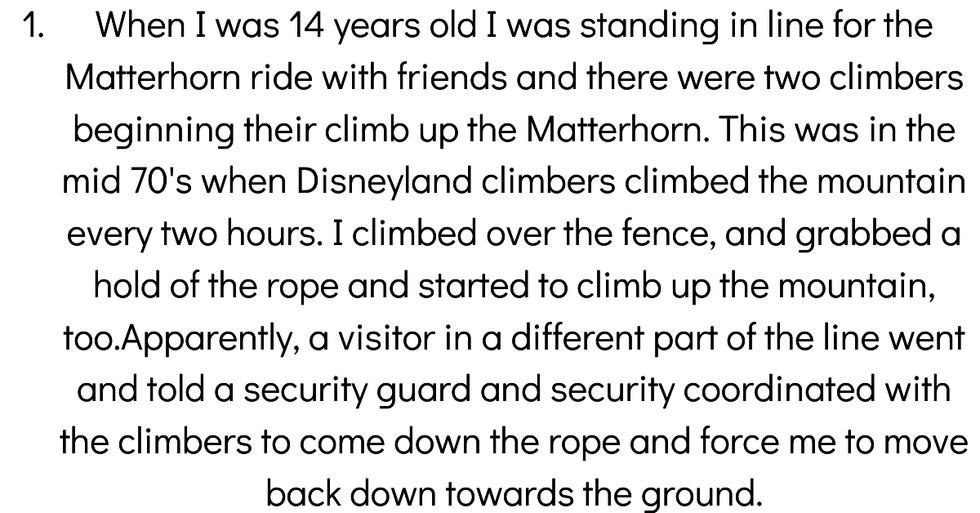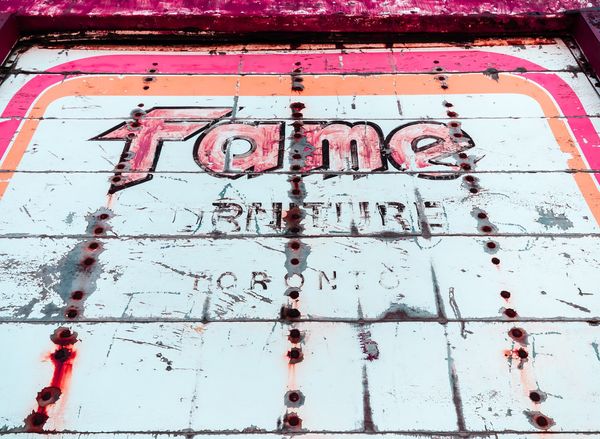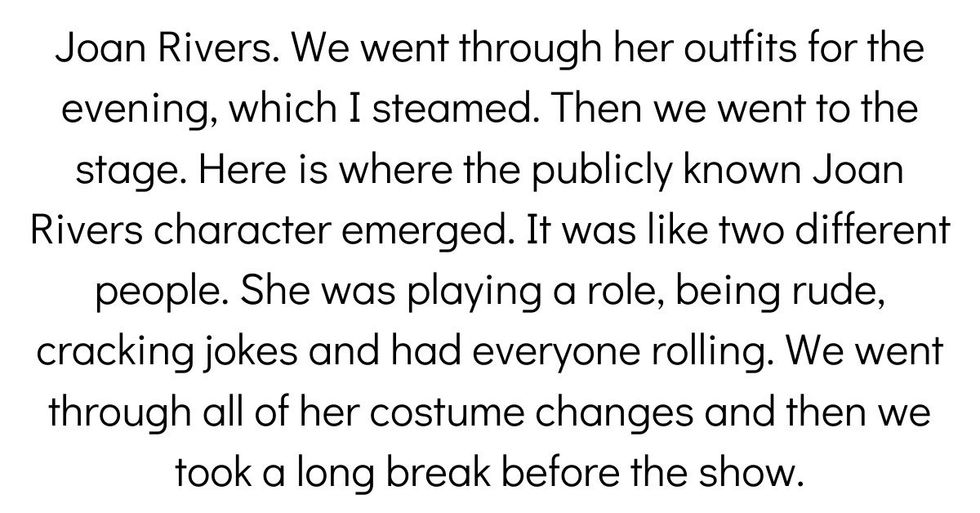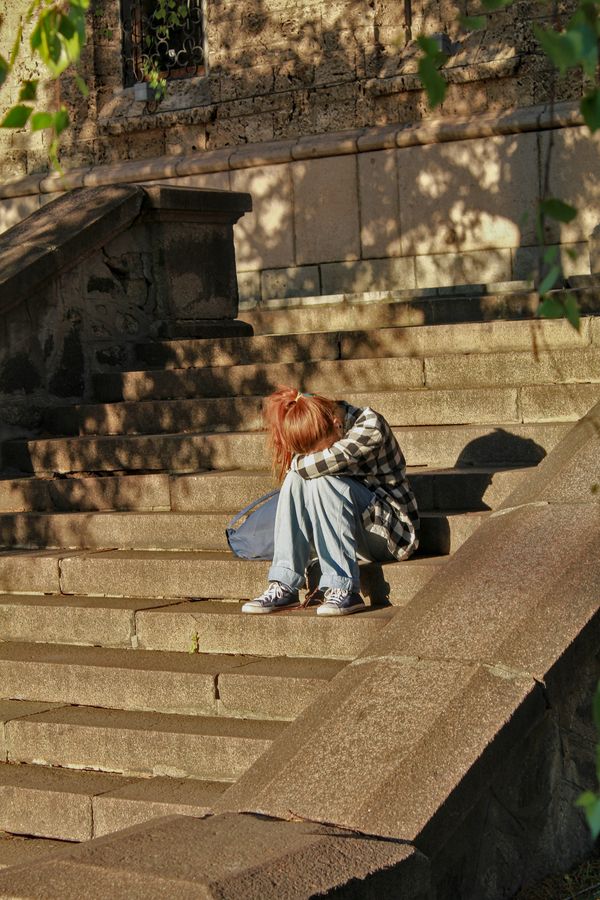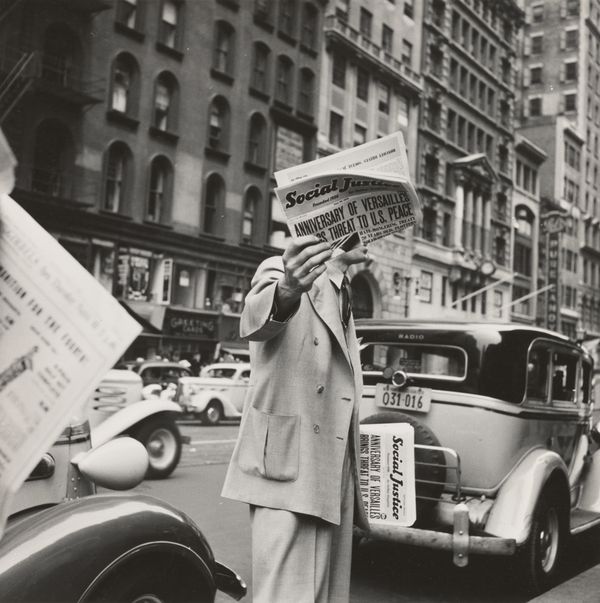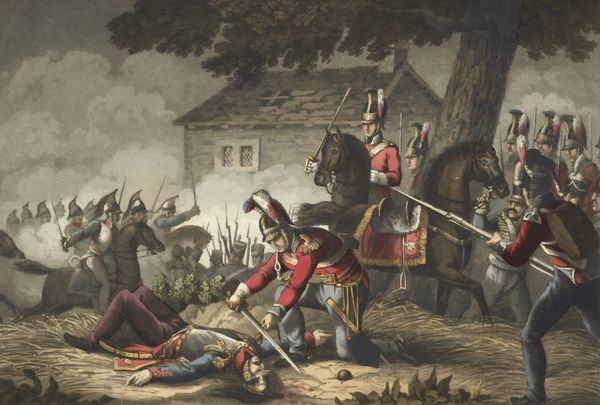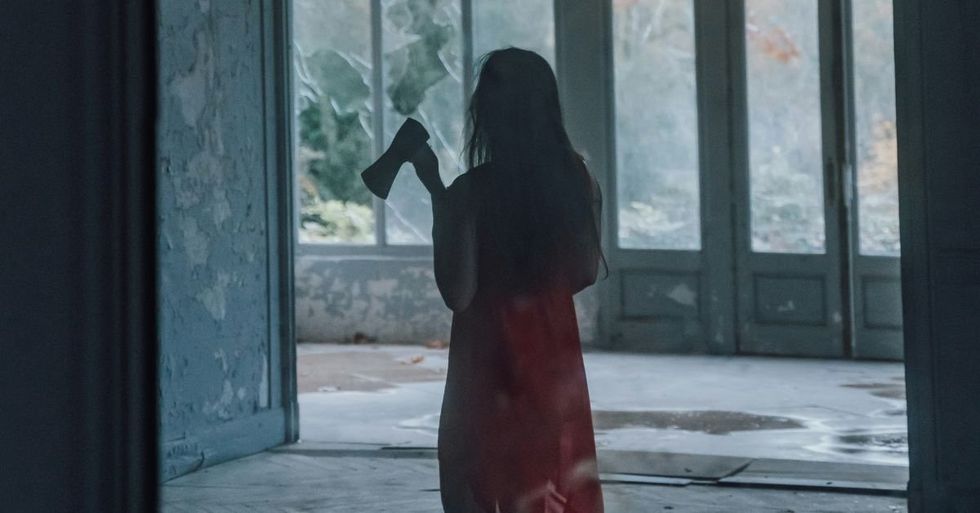12.Albert Einstein's famous "silly face"
On Albert Einstein's 72nd birthday, a photographer asked him to smile, and Einstein, joker that he was, stuck out his tongue. The photo was an instant classic, and Einstein liked it so much he ordered nine copies. One of his signed copies sold for more than $74k.
11.Pope John Paul II meets with Mehmet Agca, the man who attempted to assassinate him, 1983
On Wednesday, May 13, 1981, Mehmet Ali Agca pulled a gun and shot Pope John Paul II during a procession in St. Peters Square, Vatican City, Italy. Though critically wounded, the Pope survived four gunshot wounds to his abdomen. Following the shooting, Pope John Paul II asked people to pray for my brotherwhom I have sincerely forgiven.
In 1983, Pope John Paul II and Agca met and spoke privately at the prison where Agca was being held. The Pope brought the photographer and the cameramen because he wanted the image in that cell to be shown around a world filled with unforgiving hatreds, with hostile superpowers and smaller, implacable fanaticism.
When the Pope arrived in his cell, Agca was dressed in a blue crewneck sweater, jeans and blue-and-white running shoes from which the laces had been removed. He was unshaved. Agca kissed John Pauls hand and said:
Do you speak Italian? Agca nodded. For 21 minutes, the two men seated themselves, close together, on molded-plastic chairs in a corner of the cell, out of earshot. As John Paul rose to leave, the two men shook hands. The Pope gave Agca a small gift in a white box, a rosary in silver and mother-of-pearl. The Pope walked out. Agca was left standing alone, and the camera recorded a sudden look of uncertainty on his face. Perhaps he was thinking about the prospect of spending the rest of his life in jail for attempting to kill a man he did not know, a man who now came to him as a friend.
Agca was sentenced, in July 1981, to life imprisonment in Italy for the assassination attempt, but was pardoned by president Carlo Azeglio Ciampi in June 2000 at the Popes request. He was then (Continued)
extradited to Turkey, where he was imprisoned for the 1979 murder of left-wing journalist Abdi peki and two bank raids carried out in the 1970s. Despite a plea for early release in November 2004, a Turkish court announced that he would not be eligible for release until 2010.
Nonetheless he was released on parole on 12 January 2006. However, on 20 January 2006, the Turkish Supreme Court ruled that his time served in Italy could not be deducted from his Turkish sentence and he was returned to jail. Aca was released from prison on 18 January 2010, after almost 29 years behind bars.
10.The March of the Suffragists
 StableDiffusion
StableDiffusionOn October 27, 1917, twenty-thousand suffragists marched on Fifth Avenue in New York City demanding the right to vote. In the center is Komako Kimura (1887-1980), a prominent Japanese suffragist and actor. Kimura, along with Mitsuko Miyazaki and Fumiko Nishikawa, started a lecture series and magazine for women (May 1913-Sep 1923), both called Shin Shin Fujin (New Real Woman). She spent time in the United States, exchanging ideas with American suffragists.
9.The Ku Klux Klan on a ferris wheel, 1926
 StableDiffusion
StableDiffusionOn April 27, 1926, the Caon City Daily Record ran a surprising bulletin on its front page. Right under a notice that the local junior high school was putting together a variety show, the local newspaper of the small central Colorado town printed the headline Klansmen pose for picture on merry-go-round, along with a brief, staid description of a parade of hooded locals that went from the Klan headquarters on Main Street to the travelling amusement park that had been set up a couple blocks away.
When the photo came to light more than 65 years later, it served as a reminder of the history of Ku Klux Klan.
To understand how a picture of 41 Klansmen on a Ferris wheel came to be, you first have to understand the background of the KKK in Colorado. Caon City was the Klan capital of the State from 1924 to 1928: Colorado Governor Clarence Morley was a Klansman, Colorado Senator Rice Means was endorsed by the KKK, Denver Mayor Benjamin Stapleton was connected with the Klan, and the Grand Dragon of the Colorado Klan, Reverend Fred Arnold, was the minister of Caon Citys First Baptist Church.
By the time this photo was taken in 1926, the Klans power was at its zenith. According to the Daily Record, the Klansmen were invited to pose for the portrait by the sites proprietor, William Forsythe, a Klansman himself, who brought his mini-carnival down south from Fort Collins. In 1915, the second Ku Klux Klan was founded in Atlanta, Georgia. Starting in 1921, it adopted a modern business system of using full-time paid recruiters and appealed to new members as a fraternal organization, of which many examples were flourishing at the time. It opposed Catholics and Jews, especially newer immigrants, and stressed opposition to the Catholic Church. This second organization adopted a standard white costume and used similar code words as the first Klan, while adding cross burnings and mass parades.
At its peak in the mid-1920s, the organization actually claimed to include about 15% of the nations eligible population, approximately 45 million men. Internal divisions, criminal behavior by leaders, and external opposition brought about a collapse in membership, which had dropped to about 30,000 by 1930. It finally faded in the 1940s, but has since made a resurgence with the election of President Trump.
8.The Tragedy of "Children for Sale", 1948
On August 4, 1948, in Chicago, Illinois four small children sat on the auction block (their front porch), ready to find new homes.
For long months 40 year old Ray and his wife, Lucille, 24, waged a desperate but losing battle to keep food in the mouth and a roof over their heads. Now jobless and facing eviction from their near barren flat, the Chalifoux have surrendered to their heart breaking decision. This photo shows a mother sobbing as the children pose wonderingly on the steps.
Left to right: Lana,6. Rae, 5. Milton, 4. Sue Ellen, 2 years old.
According to RaeAnn Mills (adopted name) she was sold for $2 so her mother could have bingo money and because the man her mother was dating did not want anything to do with the children. RaeAnn Mills, and her brother were sold to the Zoeteman family. They suffered various periods of abuse, and were sometimes chained so they would not leave the farm: She doesn't remember the picture being taken and has no recollection of her birth father. She said the Zoetemans raised her in an abusive, loveless home.
They used to chain us up all the time, she said. When I was a little child, we were field workers, Mills said when she was in her late teens, she was kidnapped and got pregnant with her kidnapper's child.
She was sent to Michigan to a home for unwed mothers and brought the baby girl back to DeMotte, but the baby was taken from her and adopted.
"At 17, I left home and I never looked back," Mills said.
David McDaniel, who was in his mother's womb when the "kids for sale" picture was taken, was adopted by a couple in Jasper County McDaniel. He grew up in Wheatfield, a couple miles away from his siblings RaeAnn Mills and Milton Chalifoux. From time to time he would ride over on a bike or horse to visit. "They'd be tied up in the barn," McDaniel said. "They were badly abused." He would untie them and leave before he was caught, he said.
Milton joined his sister Mills, living on a DeMotte farm with John and Ruth Zoeteman, who changed his name to Kenneth David Zoeteman. *The siblings don't know much about their sister Lana's upbringing, but they are connecting via social media to her family. They want to learn more about her life.
I never even got to know my sister Lana because she died in 1998 of cancer, Mills said. Their birth mother remarried.
She got rid of all us children, married someone else, had four more daughters, he said. She kept them. She didn't keep us.- David McDaniel
7.Dr. John Britton carries a gun into operating room
 StableDiffusion
StableDiffusionDr. John Britton with the .357 Magnum he carried for protection when visiting the Pensacola Ladies Centre to perform abortions,
John Bayard Britton was an American physician who was murdered in Pensacola, Florida, by anti-abortion extremist Paul Jennings Hill. Brittons death was the second assassination of a Pensacola abortion provider in under a year and a half; he had replaced David Gunn after the latters 1993 murder by another anti-abortionist. After Gunns murder, Britton began flying across the state to Pensacola weekly in order to perform abortions at the Pensacola Ladies Center. Because he had received harassment and death threats, he wore a homemade bulletproof vest, carried a .357 Magnum, and enlisted volunteer bodyguards.
As Britton arrived at the clinic on July 29, 1994, Hill approached him and fired on him with a twelve-gauge shotgun, hitting him in the head and killing Britton, aged 69. Hill later stated that he aimed for Dr. Brittons head because he suspected the doctor was wearing a bulletproof vest. Hill also killed Brittons bodyguard, a retired Air Force lieutenant colonel, James Barrett (aged 74), and wounded Barretts wife, June, a retired nurse. The murder resulted in several members of Congress calling for the FBI to infiltrate anti-abortion groups, as it had with the Ku Klux Klan.
Hill was sentenced to death on December 6, 1994 and executed by lethal injection on September 3, 2003. He was the first person in the United States to be executed for murdering a doctor who performed abortions.
6.A diary entry from Theodore Roosevelt
 StableDiffusion
StableDiffusionOn February 14, 1884, Theodore Roosevelt received a terrible news, his wife and mother died within hours of one another in the Roosevelt house in New York City. His mother, age 50, succumbed to typhus, and his wife Alice died at the age of 22, giving birth to her namesake. The diary entries lovingly describe his courtship, wedding, happiness in marriage, and his grief over the death of his wife Alice.
In his ever-present pocket diary on February 14, 1884, Theodore Roosevelt simply wrote an X above one striking sentence: The light has gone out of my life.
Roosevelt had been called by telegram back to New York City from Albany where he was a New York State Assemblyman. The concern was his mothers fading health. Alice had just given birth to a baby girl two days earlier. But by the time Theodore reached his home at 6 West Fifty-seventh street, Alices condition had taken a serious downward turn. He was greeted at the door by his brother, Elliott, who ominously told him that there is a curse on this house. And so it seemed. Roosevelts not yet 50 year old mother, Mittie, was downstairs burning up with a fever from typhoid. And upstairs, his beloved Alice, scarcely able to recognize him was dying of undiagnosed Brights disease. Alice died two days after their daughter was born from an undiagnosed case of kidney failure (in those days called Brights disease), which had been masked by the pregnancy. His mother Mittie died of typhoid fever on the same day, at 3:00 am, some eleven hours earlier, in the same house.
After his wife died, Roosevelt not only never spoke her name again, but never allowed anyone else to speak her name in his presence. That included their daughter, Alice Longworth Roosevelt, who never heard her father speak her mothers name. His belief was, and he told this to a friend who also lost his wife, that the pain had to be buried as deep inside as possible or it would destroy you.
5.Captured Soviet soldier dressed in SN-42 body armor, 1944
 StableDiffusion
StableDiffusionSeen here is a portrait of a young Soviet prisoner of war in a steel breastplate SN-42, made of 2mm steel (.08) and weighing 3.5 kg (7.7 lbs), captured by Finnish troops during the Finnish-Soviet Continuation War.
A testament to the breastplates effectiveness, this young soldier had been shot three times in the chest and left unharmed.
The Steel Bib SN-42 is a type of body armor developed by the Red Army in World War II. The native Cyrillic abbreviation for the vest was . It consisted of two pressed steel plates that protected the front torso and groin. Bib SN-42 was designed to protect against bayonet attacks, small fragments of shrapnel, and 9mm pistol bullets with lead cores, providing protection against fire from a MP-38/40 submachine gun from distances of 100150m, and a single shot from a 7.9257mm Mauser rifle (like the Gewehr 41), but on the condition that the bullet went on a tangent.
Estimates of the plates performance from front-line soldiers were mixed, receiving both positive and negative feedback. Unit commanders and soldiers said that the breastplate worked well in street fighting and other type of close quarter combat, and in addition to the steel helmet, was a good and reliable method of protection from bayonets, bullets, and shrapnel. It is also necessary to point out themorale value of the breastplate. Soldiers equipped with the breastplates that had experienced their reliability went into battle calmly and assuredly. However, in the field where assault teams often had to crawl the breastplates were just an unnecessary burden.
4.The Soiling of Old Glory
Stanley Forman was at an anti-busing demonstration at Boston City Hall when he took this famous photo, "The Soiling of Old Glory". It was two years into desegregated school-busing in Massachusetts, but there were protests over the old system still.
A black attorney named Theodore Landsmark was attacked by a group of white teenagers as he exited the city hall. One of the attackers, Joseph Rakes, charged towards Landsmark using the American flag and its flagpole as a lance.
The camera motor jammed twice, but he used his last frame to capture what unfolded. The next day, it appeared on the frontpages of the Washington Post, Chicago Tribune, and San Francisco Chronicle, and The New York Times.
The next day, due to the image's widespread viewing, a major riot took place; a white bus driver was beaten and left in a coma. The busing protests went on for nearly another 10 years. Forman won a Pulitzer Prize for his photo
As for Rakes, the man wielding the flag? He was fired from his job and his life fell apart. He admitted later upon seeing the photo his thoughts were, Who is that lunatic with the flag? Then I realized it was me.
3.Women boxing on a roof, 1938.
 StableDiffusion
StableDiffusionThese women, despite looking like they are midway through a boxing match, are all wearing dance shoes, so they are probably performers for a variety show. Since no one had decent air conditioning back then, practicing their acts outside on the roof was better than in a stuffy theater. Someone must have thought itd make a good candid photo. The blonde girl is probably hitting her, but more of a stunt punch than a real one. Even if it is staged, its still historical. The original caption reads: Radio Pictures Chorus Girls. The theme of this picture is young, attractive women, exercising in the manner associated with men, which would have been an unusual thing for a woman to do in that time (especially the boxing, obviously). The photo was taken on the top of Ball Building, Paramount lot, Hollywood.
2.A 17-year-old Marcus Sarjeant shoots blanks at the Queen, 1981
On 13 June 1981, Marcus Sarjeant joined the crowds for Trooping the Colour, finding a spot near the junction between The Mall and Horseguards Avenue. When the Queen came past riding her 19-year-old horse Burmese, Sarjeant quickly fired six blanks from his starting revolver. The horse was momentarily startled but the Queen brought her under control; she was unharmed. The security quickly reacted and subdued Sarjeant, who told them I wanted to be famous. I wanted to be a somebody.
In questioning, Sarjeant said he had been inspired by the assassination of John Lennon in December 1980, and the attempts on the life of Ronald Reagan and Pope John Paul II. In particular he noted the ease with which Mark David Chapman had become famous after killing John Lennon. A friend said that at the time of John Hinckley, Jr.s attempt on the life of President Reagan, Sarjeant had said I would like to be the first one to take a pot shot at the Queen. The police found that Sarjeant had written I am going to stun and mystify the world. I will become the most famous teenager in the world.
Investigations by psychiatrists found that Sarjeant
Investigations by psychiatrists found that Sarjeant did not have any mental abnormalities. The above picture was taken by Georg P. Uebel, a tourist who discovered the picture only after his film was developed. The picture was made public at Sarjeants trial in May 1982 but did not attract that much attention. It was, as LIFE magazine called it, a misfired moment of minor note. More shocking however was the fact that at the time of his arrest, Sarjeant had on him a tape noting his intent to attack the Queen again with a loaded weapon.
Sarjeant was found guilty of an offence under Section Two of the Treason Act in that he wilfully discharged at or near Her Majesty the Queen a gun with the intent to alarm or distress Her Majesty. He wrote to the Queen from prison to apologize, but he never received a reply. After three years in jail, Sarjeant was released in October 1984 at the age of 20. He changed his name, began a new life and disappeared into history.
1."Wait for me, Daddy" 1940
Wait for Me, Daddy is an iconic photo taken by Claude P. Dettloff on October 1, 1940. It shows the British Columbia Regiment (Duke of Connaughts Own Rifles) marching down Eighth Street at the Columbia Street intersection, New Westminster, Canada. Pictured are five-year-old Warren Whitey Bernard and his parents Bernice and Jack Bernard, as the family was about to be separated by the war. The picture received extensive exposure and was used in war-bond drives.
Five year-old Warren Whitey Bernard was in Grade 1 at nearby General Wolfe Elementary. Whiteys Dad was enlisted in the British Columbia Regiment and was stationed in the city on various sentry points throughout the city. Since the declaration of war in 1939 the men of the BC regiment had been doing various guard duty assignments which were boring and monotonous. Finally, after months of waiting the regiment received word that it was to be moving to a secret destination Overseas.As the troops marched to a waiting train to take them to their next destination, photographer Claude P. Dettloff of The Province newspaper positioned himself to photograph the whole column marching down the hill.
But, as he was getting ready to take the picture, he saw a young boy run out onto the road. The mothers outstretched hand and the swirl of her coat, the boys shock of white hair and his own reaching hand, the fathers turning smile and the downward thrust of his own outreaching hand he has shifted his rifle to his other hand to hold his sons for a moment the long line of marching men in the background, all this makes an unforgettable image, a masterpiece of unplanned composition, a heart-grabbing moment frozen for all time.
The picture Dettloff captured was picked up all over the world, getting exposure in Life; it hung in every school in British Columbia during the war.The secret destination the regiment was heading to turned out to be Nanaimo, only three hours away. The regiment spent time on the coast defending against German and then Japanese attack. It wasnt until August, 1942 that the bulk of the Regiment sailed for England. They didnt see action until July 23, 1944 when they landed at the established D-Day beach head and participated in Operation Totalize: one of the first attempts to close the Falaise Gap. After the Allies had crushed the German Army groups based in France they with the rest of Allies harassed the retreating Germans all the way to Holland. There the regiment took part in a number of operations in Holland and in Northern Germany. The last battle they took part in was on April 17, 1945 when they crossed the Kusten Canal. A month later Victory in Europe day (VE-Day) was declared on May 5, 1945.
Throughout the war the Regiment had 122 Officers and men killed and 213 wounded.Whiteys dad survived the European theatre and came home in October 1945. One major causality of the war was Whiteys parents marriage; as Jack and Bernice Bernard eventually divorced. Whitey grew up and moved to Tofino and met and married his wife Ruby in 1964. His wife Ruby, fondly recalls that she had actually known her husband for years. Whiteys photo was hung in every school in British Columbia during the war, she said. I saw him years and years before we actually met.



